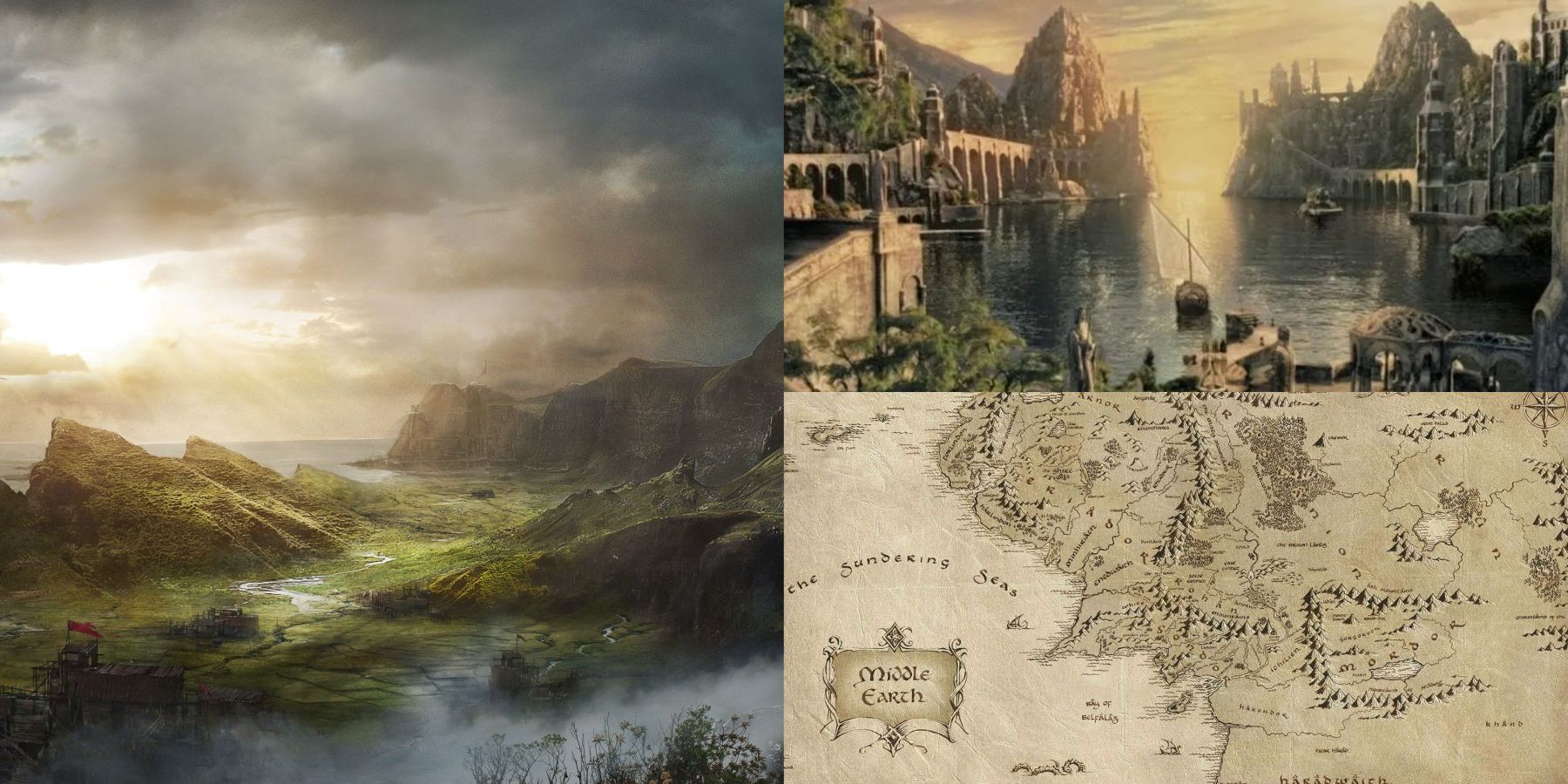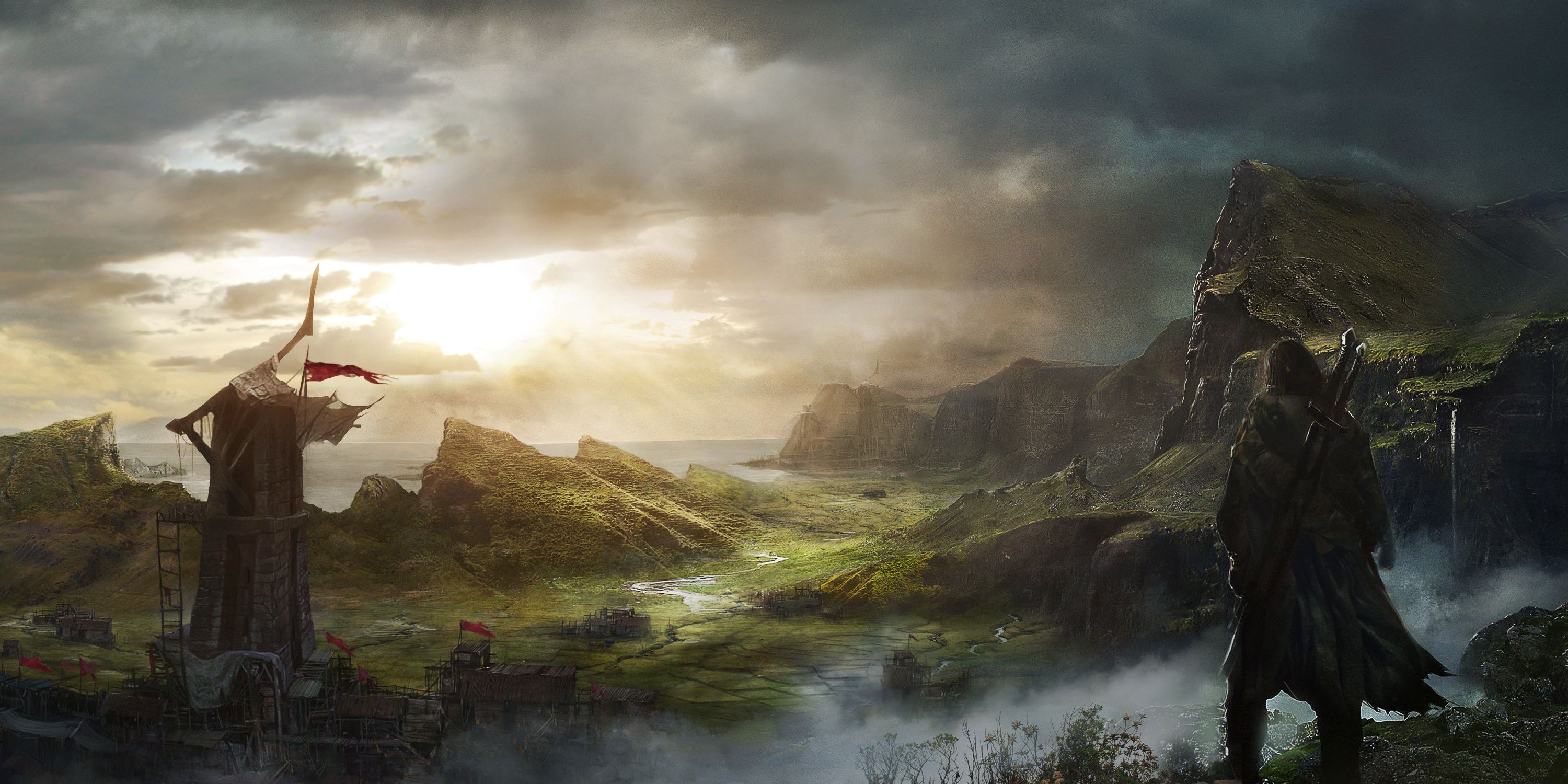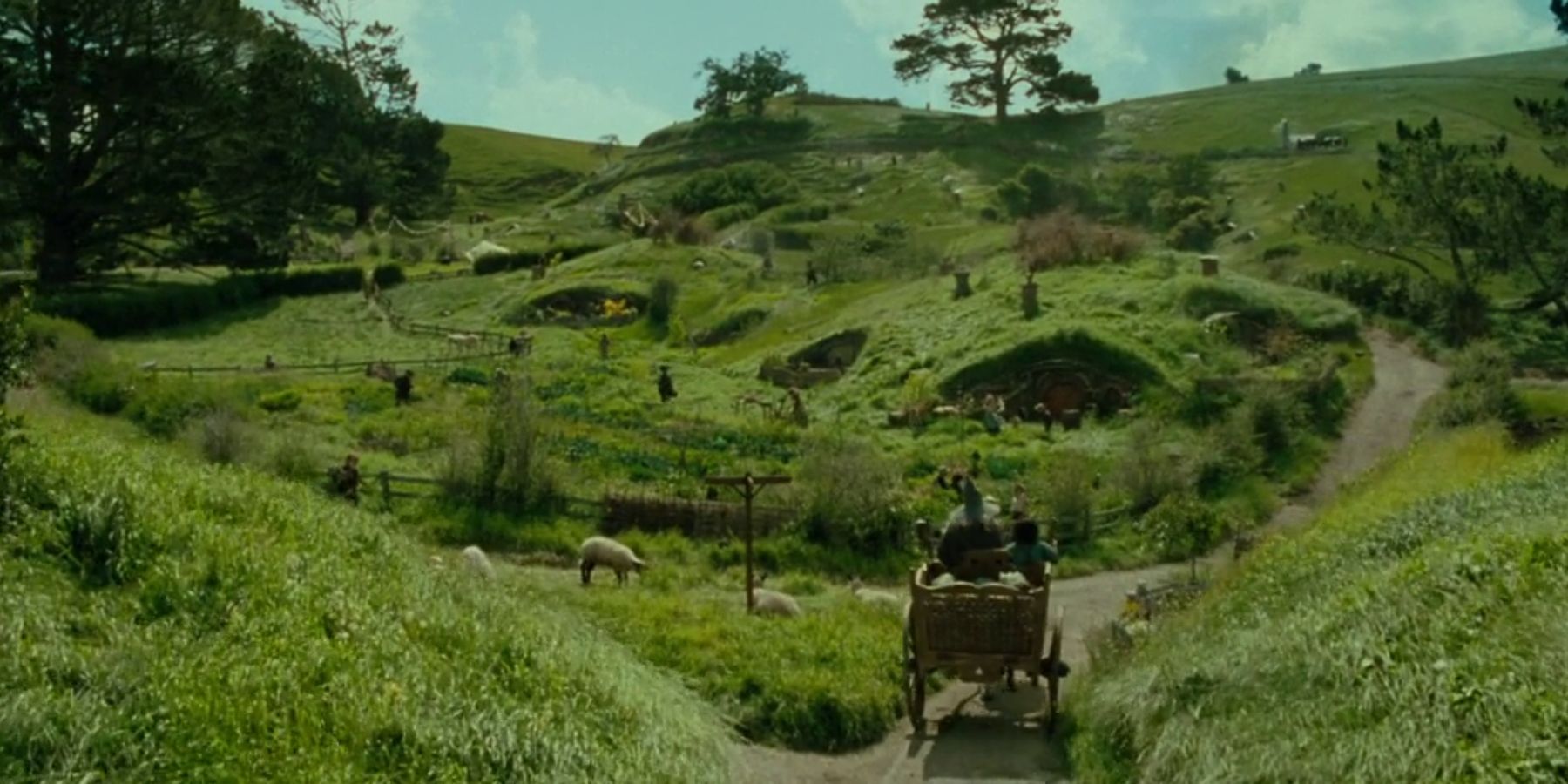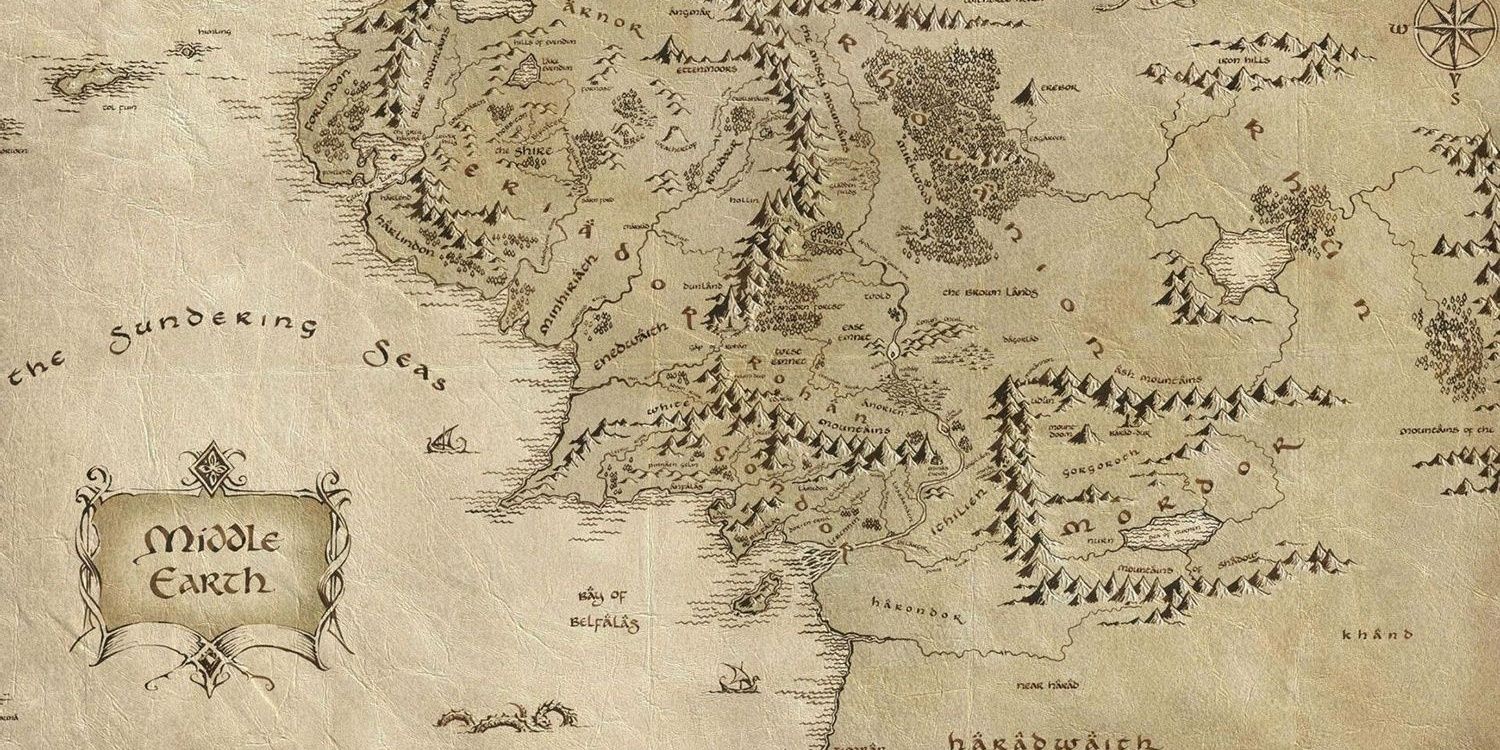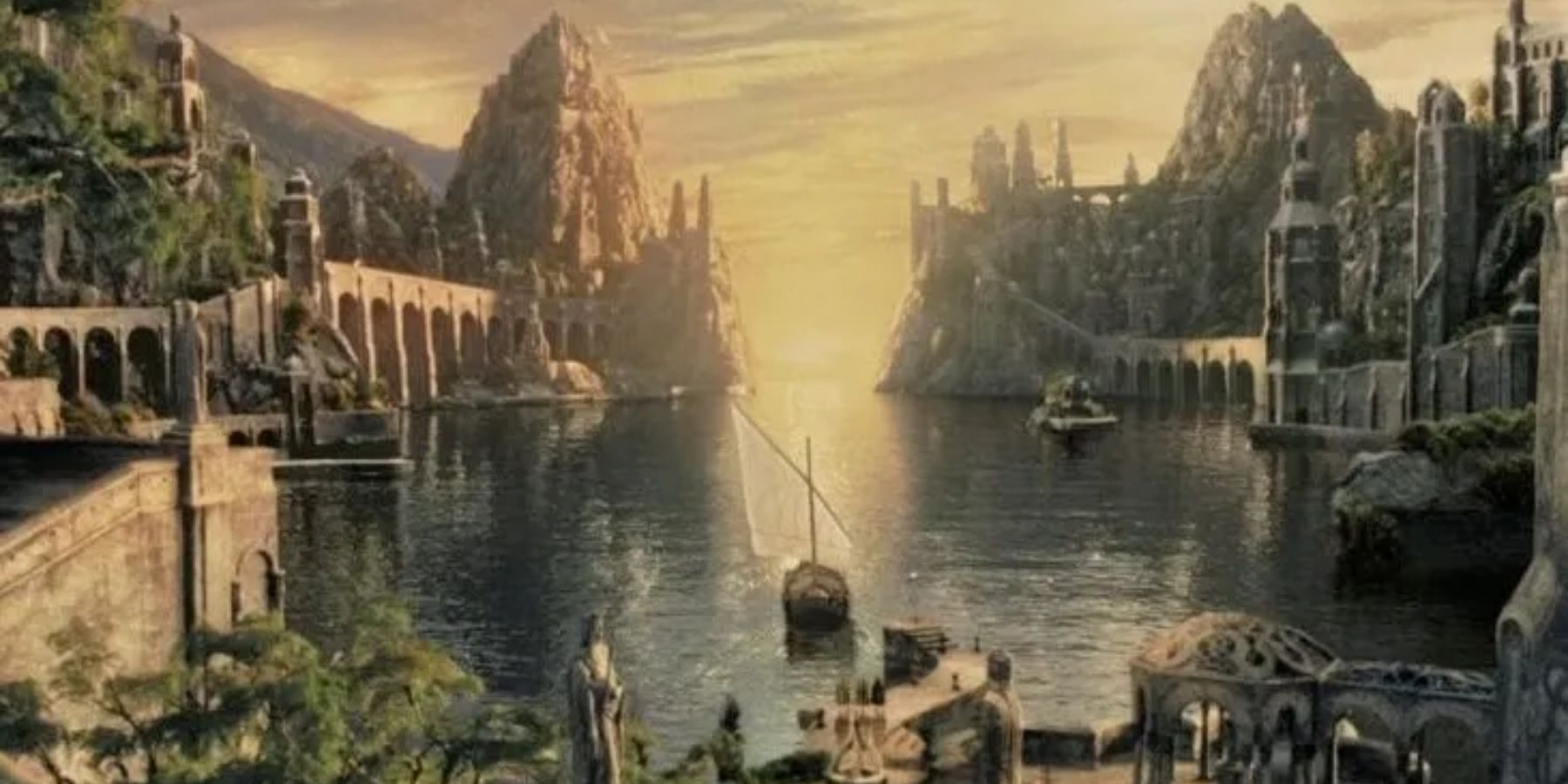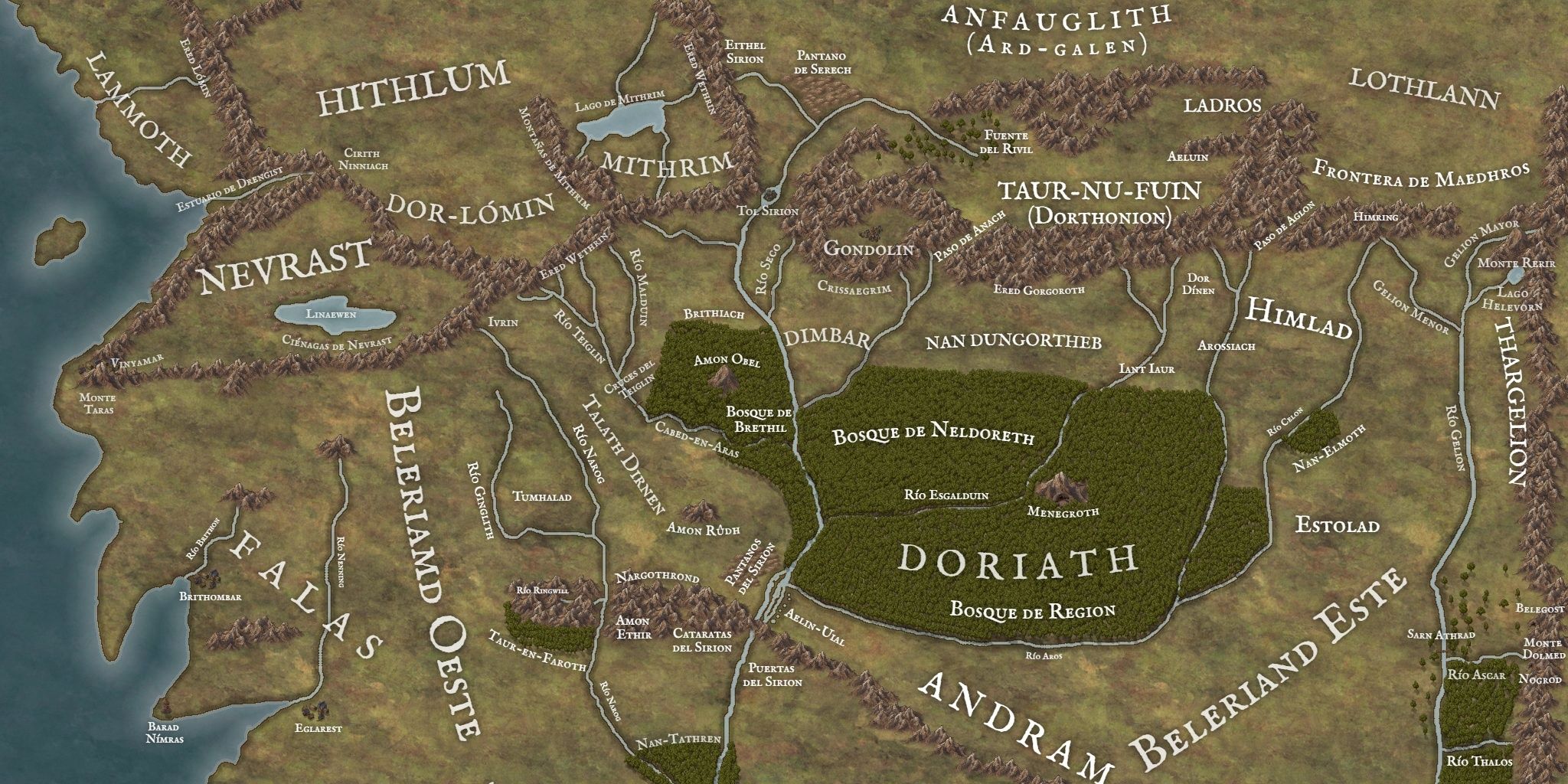Like any masterfully-crafted fantasy setting, J.R.R. Tolkien's universe is brimming with layers of detail and complexity. Middle-earth serves as the primary continent of Arda (Earth). Unsurprisingly, thousands of years of history brought about massive changes in Arda's composition, Middle-earth included.
Although The Lord of the Rings movies allow viewers to witness a wide spectrum of Middle-earth's locations, it serves only as a drop in the bucket. Avid readers of Tolkien's work know that the fantasy universe has a much more storied history than what was seen in the movies. As such, these details are likely only known to those who have read the novels, particularly The Silmarillion.
5 Tolkien's World Represents The Ancient Past
Fans of the movies may be surprised to learn that the world illustrated in Tolkien's universe is meant to depict the real Earth's ancient past. In Tolkien's interpretation, the universe was created as a result of an event known as the "Music of the Ainur." Eru Illuvatar, the One, with the help of angelic beings called Ainur, created the world as we know it through music.
The first three "Ages" of Arda's history are characterized by the inclusion of various mythological races, such as Elves, Dwarves, Ents, Hobbits, etc. However, by the conclusion of The Lord of the Rings, the Third Age ends and the Fourth begins. By the dawn of the Fourth Age and beyond, only Men remain on Middle-earth.
Throughout the succeeding Ages, the continents of Arda, including Middle-earth, were slowly reshaped until they settled into their current form. Thus, the present day is said to be occurring in the Sixth or Seventh Age. In addition, races like Elves, Dwarves, and Hobbits are treated as myths by people today since they faded from Middle-earth so long ago. It's a neat, albeit wholly fictional take on the ancient past.
4 The World Was Originally Flat
By the Third Age, the Earth was spherical as it is in reality. Nevertheless, this wasn't always the case according to Tolkien's fiction. When Eru Illuvatar, with the help of the Ainur, created the universe, the Earth was originally made flat. As a result, Arda took the shape of a disc.
Furthermore, Arda wasn't lit by a sun or moon initially. The Valar (Ainur who chose to inhabit the world) created two lamps hewn into great pillars of rock to illuminate the world. The Valar lived on an island known as Almaren between the two lamps, surrounded by a large lake. This was the extent of Middle-earth at the beginning of time.
3 The Earth Was Eventually Made Spherical
Melkor, later known as Morgoth, destroyed the two lamps. In the aftermath, the geography of Middle-earth was changed drastically. The Valar fled to a new continent far to the west of Middle-earth called Aman (also known as Valinor). However, more significant changes were yet to come.
By the Second Age, Arda experienced yet another major transition. The Earth was made round and Valinor was removed from the physical plane, which rendered travel there impossible except for the Elves. It's also worth mentioning that the Sun and Moon were created by the Valar shortly after Morgoth poisoned the Two Trees of Valinor.
2 Elves Sail The Straight Road To The Undying Lands
By the end of the Third Age, most of the Elves had left Middle-earth, setting sail for Valinor via the Grey Havens. As previously stated, Valinor was removed from the physical plane after Arda ceased to be flat. Nonetheless, the Elves still possessed the knowledge of how to reach the Undying Lands.
The Elves accomplished this feat by traveling the Straight Road to Valinor. This secret route transcends space and time, allowing only the Elves to reach the Undying Lands via their ships. Frodo, of course, embarks on this journey at the end of The Lord of the Rings with the remaining Elves of Middle-earth.
1 The Sinking Of Beleriand
Longtime fans of the movies and books can likely conjure rough images of the map of Middle-earth in their minds. Interestingly, there used to be a lot more landmass in Middle-earth during the First Age compared to the Third. The Silmarillion sheds a lot of light on this subject.
Originally, the northwestern region of Middle-earth was known as Beleriand. This area was populated by several Elven kingdoms as well as those of Men. Grand realms such as Nargothrond, Gondolin, and Doriath were located in Beleriand. In addition, Morgoth's fortress of Thangorodrim was erected in northern Beleriand at the base of the Iron Mountains.
At the end of the First Age, Morgoth was defeated in the War of Wrath. As a consequence of that final, climactic war, Beleriand was sunk into the sea and utterly destroyed. Only a small eastern section of the region survived the sinking. The island of Numenor would meet a similar fate later in the Second Age.

